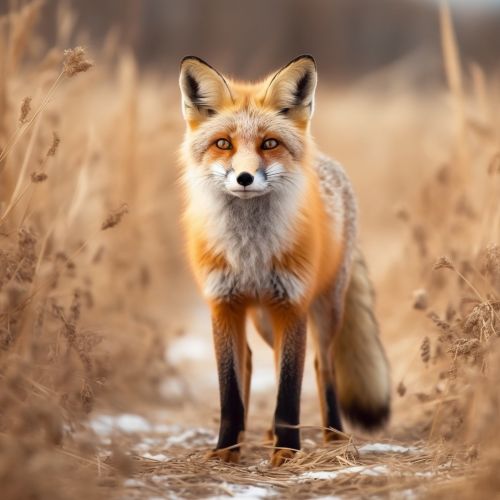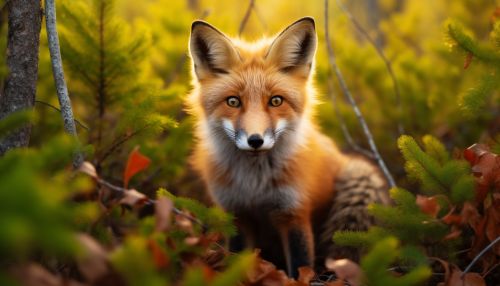Vulpes
Taxonomy and Evolution
Vulpes is a genus of the Canidae family, which includes animals commonly referred to as foxes. The term 'Vulpes' is derived from the Latin word for fox. The genus contains twelve species, including the red fox (Vulpes vulpes), which is the most common and widespread species of fox. The genus Vulpes evolved from the Canidae family approximately 11.6 million years ago.


Physical Characteristics
Members of the Vulpes genus are small to medium-sized canids. They are characterized by their slender bodies, long, bushy tails, and pointed snouts. The coat color varies greatly among species, ranging from the bright red of the red fox to the grey of the corsac fox (Vulpes corsac). Vulpes species have large ears, which aid in thermoregulation and hearing, and vertically oriented pupils, which enhance their nocturnal vision.
Habitat and Distribution
Vulpes species are found throughout the Northern Hemisphere, with their range extending into the Southern Hemisphere in certain regions. They inhabit a wide variety of environments, from arid deserts to Arctic tundra. The red fox, in particular, has a very wide distribution, being found across the entire Northern Hemisphere, and has been introduced to Australia.
Diet and Hunting
Vulpes species are omnivorous, with their diet consisting of small mammals, birds, insects, and plant matter. They are solitary hunters, relying on their keen senses of hearing and smell to locate prey. They employ a unique hunting technique known as 'mousing', where they leap high into the air and pounce on their prey.
Reproduction and Lifespan
Vulpes species are monogamous, with pairs remaining together for life. The female, or vixen, gives birth to a litter of 2-12 pups after a gestation period of around 50 days. The pups are cared for by both parents until they are old enough to hunt for themselves. The average lifespan of Vulpes species in the wild is 2-4 years, although they can live up to 10 years in captivity.
Conservation Status
The conservation status of Vulpes species varies greatly. Some species, such as the red fox, are listed as 'Least Concern' by the International Union for Conservation of Nature (IUCN), while others, such as the Darwin's fox (Vulpes fulvipes), are listed as 'Critically Endangered'. Threats to Vulpes species include habitat loss, hunting, and disease.
Cultural Significance
Vulpes species have a significant presence in human culture, featuring in folklore, mythology, and literature across the world. They are often portrayed as cunning and trickster figures. In modern times, they are popular subjects in wildlife photography and film.
